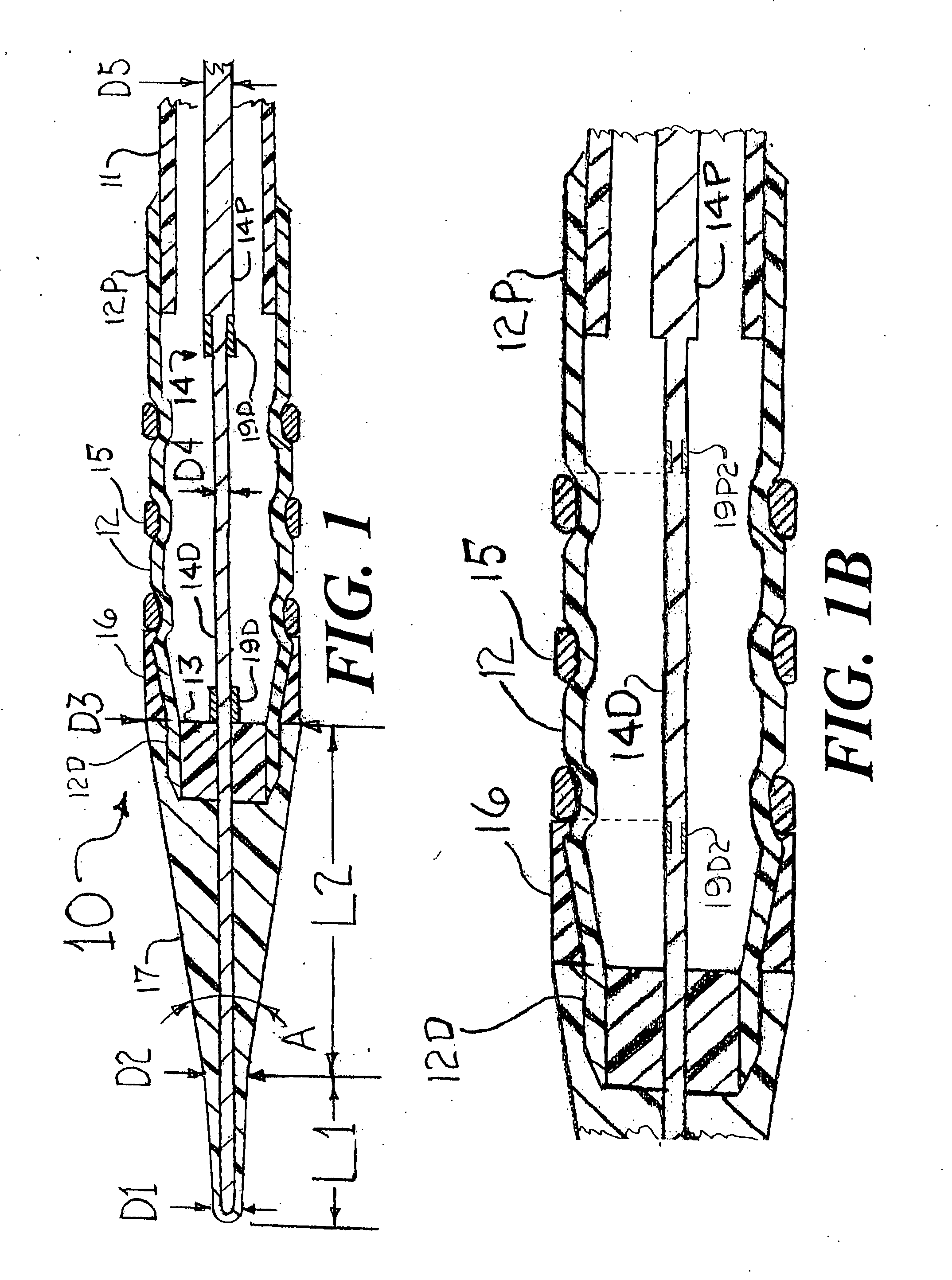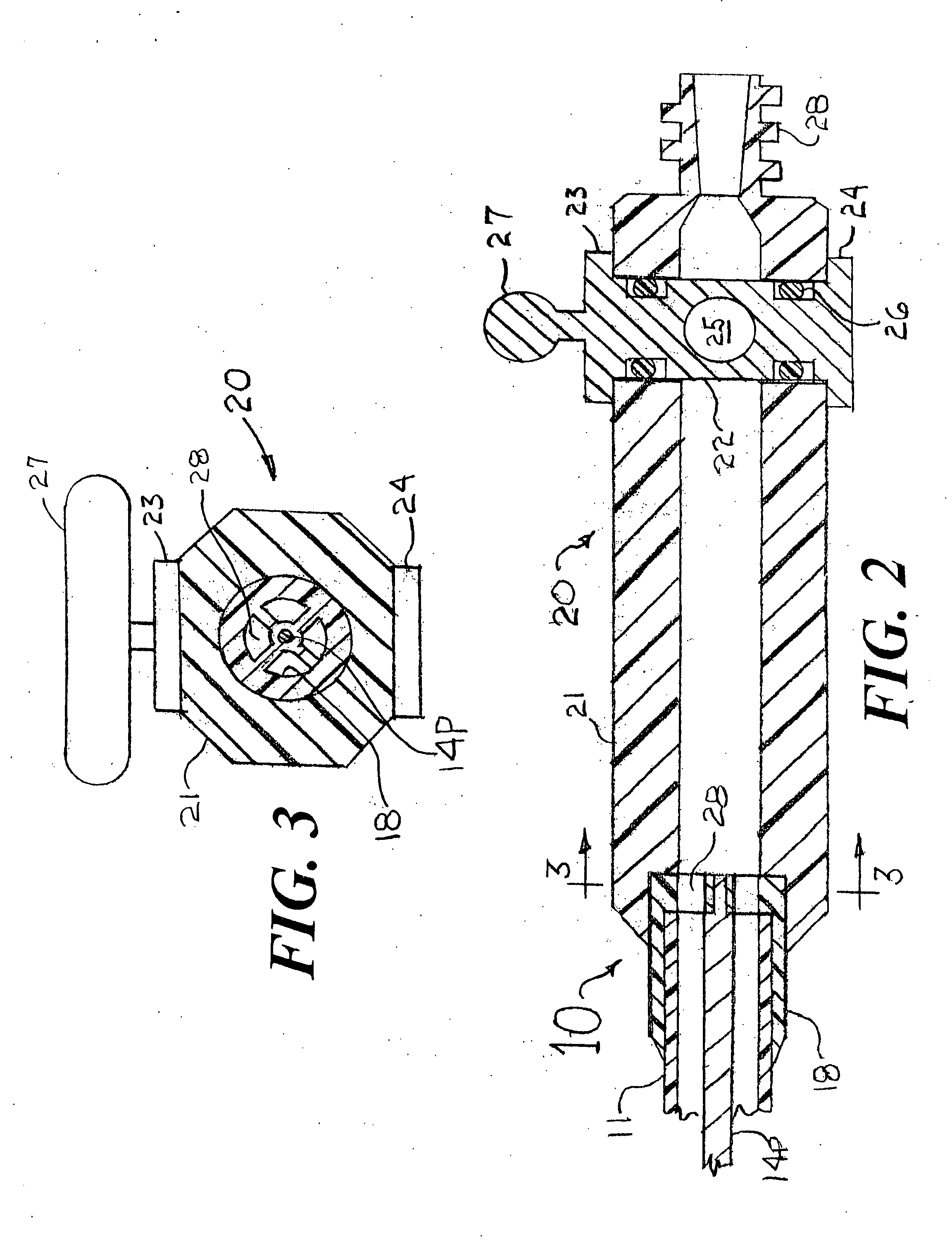Stent delivery system with improved deliverabilty features
- Summary
- Abstract
- Description
- Claims
- Application Information
AI Technical Summary
Benefits of technology
Problems solved by technology
Method used
Image
Examples
Embodiment Construction
[0024]FIG. 1 is a longitudinal cross section of a distal portion of a stent delivery system 10 that has an cylindrical tube 11, a balloon 12, a balloon connector 13, a core wire 14, a stent 15, an elastomer band 16, and a front section having a small angle cone 17, a distal radiopaque marker band 19D and a proximal radiopaque marker band 19P. The cylindrical tube 11 would be formed from a thin-walled polymer that could include metal reinforcement (such as a mesh, braid, strands, etc . . . ) or, at least some of its length could be a thin-walled hypo tube or a hollow strand configuration. The balloon 12 would be a typical balloon as is well known in the art for deploying the stent 15 into an arterial stenosis. Only the outer layer of the folded balloon 12 is shown in FIG. 1. For the sake of clearly visualizing the concepts of the present invention, the scaling of FIG. 1 is such that the radial dimensions of the stent delivery system 10 are very much enlarged as compared to the scalin...
PUM
 Login to View More
Login to View More Abstract
Description
Claims
Application Information
 Login to View More
Login to View More - R&D
- Intellectual Property
- Life Sciences
- Materials
- Tech Scout
- Unparalleled Data Quality
- Higher Quality Content
- 60% Fewer Hallucinations
Browse by: Latest US Patents, China's latest patents, Technical Efficacy Thesaurus, Application Domain, Technology Topic, Popular Technical Reports.
© 2025 PatSnap. All rights reserved.Legal|Privacy policy|Modern Slavery Act Transparency Statement|Sitemap|About US| Contact US: help@patsnap.com



